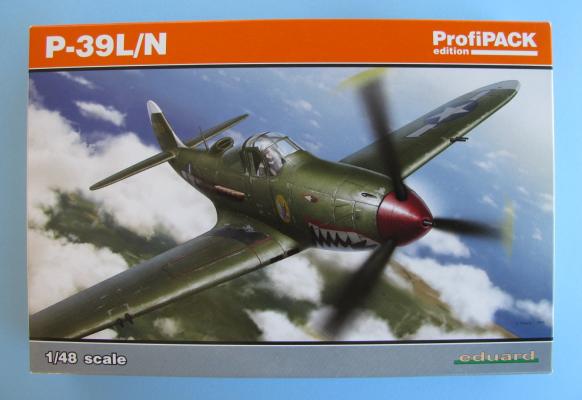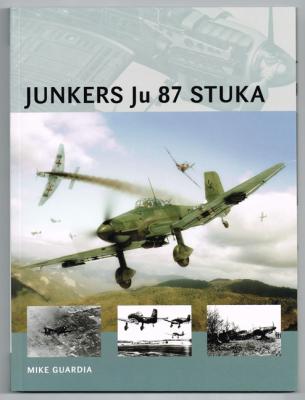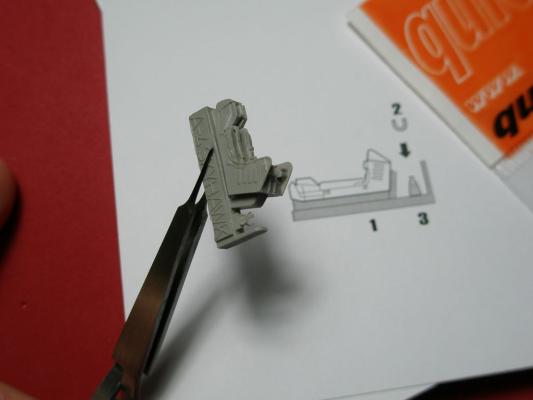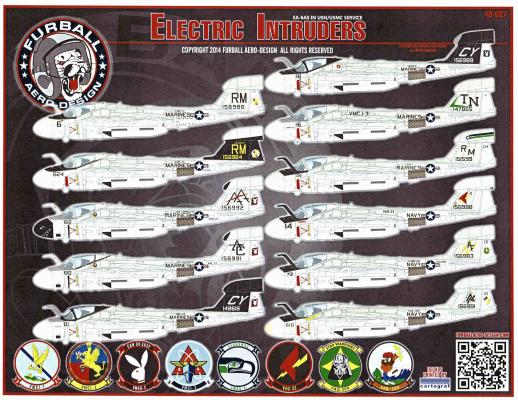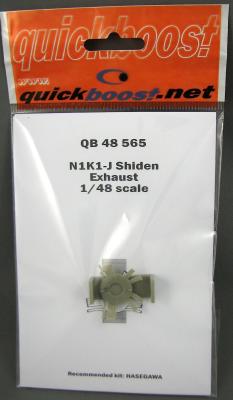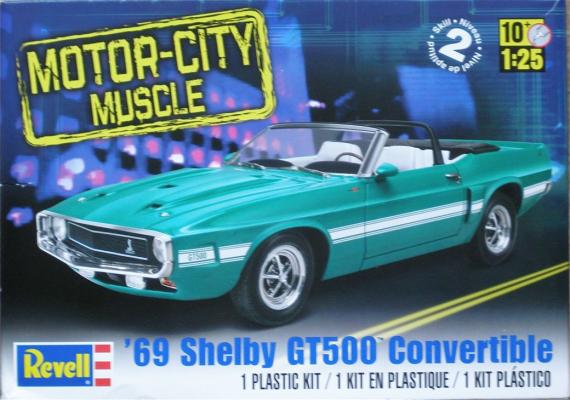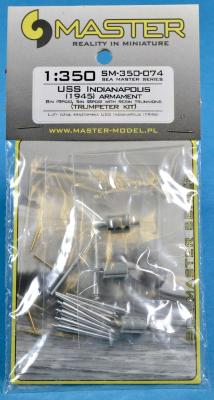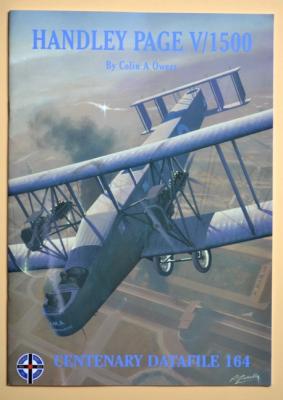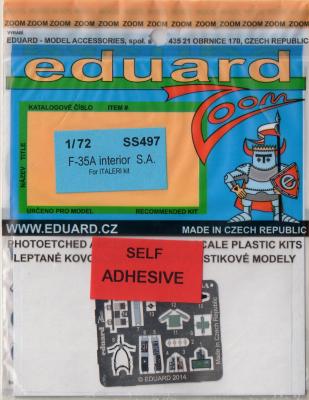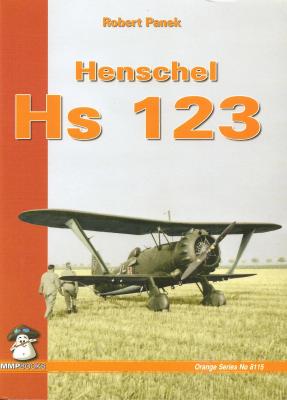Although it has been a few years since Eduard released their newly tooled P-39, this latest issue of the L and N versions holds up to the standards of any current aircraft molding. Markings are included for three planes flown by Americans as well as for two Russian-flown aircraft. In addition to markings for multiple aircraft, the ProfiPACK includes masks for all of the clear parts as well as color photoetched parts. The kit builds up well, with minimal filling being required on the fuselage seam, and nowhere else, and can be built by any modeler with limited experience in order to create a reasonable looking Airacobra. Parts are included for the L and N variants specifically for the markings included, but other variants could be built if desired.
What's New
Junkers Ju 87 Stuka is number 15 in Osprey’s Air Vanguard series. What this book is not is a technical reference manual for model builders, with an abundance of drawings, walkaround photographs and full-color profiles. Rather, it is a general overview of the Stuka with a reasonable amount of period photos, artwork and a few color profiles that add to the story of how the aircraft came about and its roll as the Luftwaffe’s primary operational dive bomber. It should be of interest to those who don’t know a great deal about the aircraft or would like to have a quick study of the subject in a single publication. But, modeler builders who already have a number of good Stuka reference books in their library may not find this book a necessary acquisition.
I intend to use this Quickboost seat to replace the kit part in an Airfix A-4B.
The seat is molded in super nice bubble-free resin, with sharp, molded detail of the lap belts, shoulder harness, and oxygen hose. The primary and secondary ejection handles are molded separately and are located on the pour stub beneath the seat pan.
The stiffening corrugations on the sides of the seat are correctly portrayed as standing proud of the metal surface, whereas the kit part has them indented. This is a moot point, since when the seat’s installed they won’t be visible anyway.
When I placed the Quickboost seat into the Airfix cockpit tub, it was apparent that it was too tall---the canopy would never close. Compare the photo of the Airfix seat in the fuselage half on the left, with the Quickboost seat in the fuselage half on the right.
Furball (Geoff Martin) has been producing some awesome decals and with this latest release, he addresses a venerable kit, Revell's EA-6A Electric Intruder. As a quick background, before the four seat EA-6B came into service to jam all those enemy radars, the Marines ordered 27 of the EA-6A Electric Intruders. They look like Intruders with Prowler tails! Revell's kit has been out a while but still can be built into a beauty and Furball has given us 11 superb schemes to dress the kit up.
As with most Furball sets, you get five large color pages- a cover sheet, side profile sheets of all 11 jets, a sheet of wing marking locations and one sheet showing the stencils provided. All sheets have color call outs with the needed FS numbers. There is one large decal sheet with markings and stencils and one small sheet with wing walks and color for the arrestor hook. The decals have perfect register and are printed by Cartograf.
Here is another great addition to the growing Quickboost line of detailed exhaust parts. Here we see a set for the 1/48 Hasegawa N1K1-J “George” WWII Japanese Naval Fighter
The exhaust set comes in the typical Quickboost plastic sleeve packaging, and contains a single resin part attached to a ‘base plug’ which is easily removed.
The Quickboost set is a direct replacement part for those with the kit, so there is no major surgery needed to use these parts. With some very minor clean-up, they are able to be painted and glued into place. Since these are resin parts, you will have to use your favorite brand of super-glue.
Revell has re-issued their Shelby GT500 as a convertible with a new body shell, roll bar, a convertible top which can be modeled up or down with an included boot, and also features two options for the engine. The mill can be built stock, or with a set of dual quads and a high-rise manifold. The hood has a scribed, outlined section to cut out in order to accommodate the custom engine option if that’s the builder’s choice. A set of stock wheels and a set of custom ones are included as well.
The interior is a one-piece tub, with separate seats and instrument panel/dashboard. Decals are provided for the instrument cluster, plus the wood panels on the doors and the dash.
Construction on the chassis was pretty straightforward with only a couple of minor fit issues with the exhaust pipes. I noted the molded-on lettering on the frame said the kit was originally issued in 1988 - I don’t know how many of the original fastback kit parts are common with this new issue.
History
I’ll have to admit a personal fascination with the story of the USS Indianapolis. I read a magazine article about the tragedy during my high school years, which was probably close to the 30th anniversary. In July of 1945, the Indianapolis, a Portland-class heavy cruiser, was tasked with the top secret mission of delivering parts for the first atomic bomb to be dropped on Hiroshima, Japan. On the next leg of her journey, the ship was struck by two torpedoes from a Japanese submarine. The ship sank within minutes, leaving almost 900 of her surviving crew stranded in the Pacific Ocean at the mercy of the elements, dehydration, and marauding sharks. After three days in the water, they were finally rescued, but only 317 of the men survived the ordeal.
All jokes aside, the Handley Page V/1500 was proof that in some situations size does matter. At the time when military aviation was still somewhat in its adolescence, the controversial idea of dropping a significant bomb load on an enemy target 500 miles away (and flying over a substantial body of water in the process) meant finding an appropriately large and powerful aerial vehicle to carry out the mission. The Germans had used huge zeppelins to bomb London, but some in Britain believed it a better strategy to use an aeroplane to return the favor. Thus was born a scheme to build a ‘Super’ bomber…actually a ‘Super’ Handley Page bomber, capable of carrying up to 30 250-lb. bombs.
Eduard Models continues to add these excellent pre painted cockpit interior sets that save modelers both time and grief when it comes to painting an aircrafts interior. This one is for the Italeri F-35A. The pieces look very realistic and dress up the cockpit. I know that I will leave this canopy open. They are also self adhesive, but I like to add a little CA glue for that added strength.
It doesn’t take very much time to add these details. Just add an interior base coat and then start adding details. Some pieces just go right on while some need a little bending. I only needed a bending tool for part # 9 because it is shaped like a small box, for the rest I bent the parts with a small set of pliers. I’m really impressed with the final results.
I highly recommend this interior detail set if you want a nice touch of realism.
I would like to thank Eduard for making a very tedious task easier and IPMS USA for the chance to review this item.
MMP’s latest volume in their “Orange Series” covers the Henschel Hs 123. The book is published on high quality smooth paper, in-between glossy stiff stock covers. On first inspection this appears to be of the same high production quality I have found in all other MMP productions. Lots of clear photos and nicely-done color plates appear throughout the book.
In a similar manner to other titles in this series, this book starts with several chapters covering the design and development of the Hs 123 (about 30 pages in ll). Throughout each of the chapters in this section there are numerous 1/72nd scale drawings depicting either the entire aircraft, or a particular feature thereof. This is followed by a chapter titled “Technical Description.” Here, as one might expect, the technical specifics of the design are laid out (ie, single-seat sesquiplane of metal construction….), and the text is accompanied by drawings from the actual Technical Manual of the aircraft.

